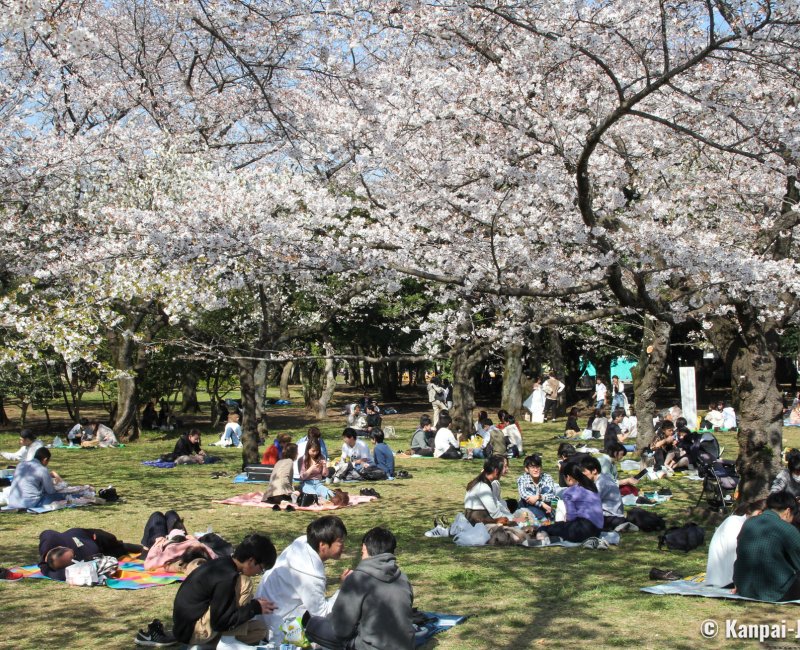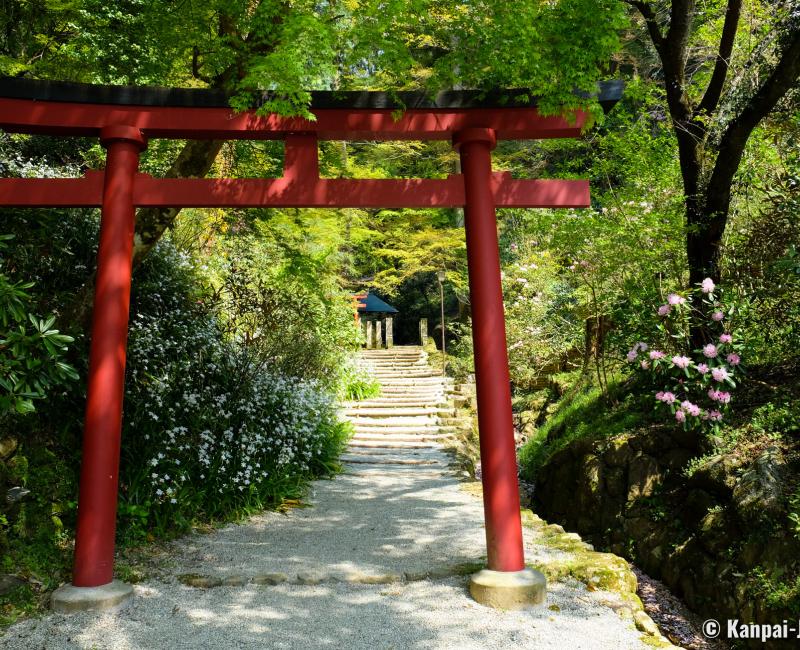Why You Should Not Go to Japan in April
While this article’s title is deliberately provoking, 2023 is nonetheless the year of the 1rst post-Covid high touristic spring, with Japan opening to foreign travelers after a 3-years long ban. The idealized picture of blooming cherry trees is tempting the minds of tourists who have been waiting for 3 long years to admire this splendid and ephemeral season. However, despite the good news of the reopening of the borders in October 2022, there are still a few risks and downsides to take into account before going on a trip in the archipelago during this decisive April 2023.
However, these drawbacks are not limited to 2023’s "revenge travel" as problems that existed before the Coronavirus 🦠 crisis are still here and unlikely to disappear in this year of recovery. Let’s make an overview of this less than exceptional choice to travel in Japan in April.
The inflated prices of the peak tourist season
More than any other flower in Japan, sakura 🌸 blossoms are the most doted on and the most attractive regarding tourism. The beginning of spring is therefore a very high season, and prices in the tourism industry sharply rise given the (limited) supply and the (plentiful) demand.
Combined with the scarcity of good deals, it is also very difficult to plan a last minute trip to Japan in April. Be it flights, accommodation, or transportation, it is strongly recommended to book far in advance, up to a year prior, as soon as booking calendars are available. And even then, do not expect to get the best price. Tourism professionals know that their destination will be popular at this time of the year and that they will be at capacity.
As an order of magnitude, the rooms priced at a standard hotel 🏨 like the M's Hotel Gojo Naginatagiri, in the center of Kyoto, increase fourfold between January (low season) and early April, when the city’s frequentation is at its peak correspond with the cherry trees blooming. For the same thing, April is definitely more expensive than any other similarly interesting periods such as late February / early March, or later in spring, like May. Being able to watch the blooming sakura generates additional charges that visitors feel in their wallets.

Congestion of must-see places
The gradual return of milder weather naturally attracts crowds in parks and gardens, as they want to enjoy viewing the budding flowers. Weekends are especially crowded with families doing outdoor activities and the proverbial picnics under the blooming cherry trees.
The ephemeral quality of spring exacerbates the congestion in the most popular and beautiful sites. Therefore, must-see sakura spots such as:
- Chidorigafuchi moats in the capital;
- Ueno Park;
- Shinjuku Gyoen garden;
- The banks of the Meguro-gawa river at nightfall;
- The Keage Incline railway tracks in Kyoto;
- The Philosopher’s Path; and,
- Osaka Castle 🏯 are overcrowded at this time of the year and the only sightseers’ deterrent is rain.
There is nothing in common with the sad spring 2020, in the early days of the Corona pandemic, as our pictures showed at the time:
This current season is therefore not recommended to travelers who are not prepared to endure the crowd and its trampling. Those who still have motivation can arrive on site as early as possible, or visit smaller and less crowded places, which are nonetheless worth the trip. As for transport, we also recommend considering the "Green" (First Class) version of the Japan Rail Pass for quieter travels.
On a side note, this bottleneck effect is increased for places that already functioned with visitors’ caps and time slots. For example, getting a ticket for the Ghibli Museum or themed parks such as Universal Studios Japan is akin to an over-expensive and faraway dream. Foreign tourists usually don’t have access to the same opportunities as the locals.

In Tokyo, Kyoto and Osaka the cherry tree blossoming will be already or nearly passed
At the risk of sounding disappointing but April is not necessarily synonymous with cherry blossoms in full bloom in Honshu’s central regions, where most of the tourists flock. In general, the sakura blossom period only lasts up to 2 weeks:
- One week to reach the flowering peak after the first buds blossom; and,
- A 2nd week during which the petals fall and give way to the young green leaves.
In the event of rain ☔️ or wind, their lifespan is shortened. With the recent years’ climate change, the blooming periods tend to occur from a few days to 1 week before previous dates. Thus, in 2022 and according to the Japanese Meteorological Association:
- In Tokyo, the blooming was observed only in March: from March 20 to 27;
- In Kyoto and Osaka, the flowering peak happened on March 30, namely 5 days earlier than the previous years’ average.
In April, the best destinations to celebrate ohanami are now the northernmost regions of Japan, or the mountainous ones, especially cities such as Sapporo, Aomori, Sendai or Nagano. Nearer from Tokyo, Hanamiya Park in Fukushima City can be mentioned, but it is still quite the distance.
The other popular flowers blooming after the sakura (such as azaleas, wisterias or roses 🌹) have their own numerous botanical admirers. Overall, the landscape becomes greener thanks to the return of the young leaves on the trees.

Sunset still early in the afternoon
In the Land of the Rising Sun, one must wait until summer solstice to really enjoy pleasant late afternoons. In April, the sun is still setting relatively early, around 6:15 p.m. in Tokyo, which as a comparison is 2 hours before nightfall in Paris at the same season.
To optimize the time spent there, we recommend getting up at dawn to enjoy temples and gardens to the fullest at their lowest attendance hours. Spiritual sites usually open as soon as sunrise, from 5:30 – 6 a.m. in April. However it might not be to everyone’s taste!
Furthermore, temperatures are still too low for open-air terraces to open during the night. For example, beer 🍺 gardens on Tokyo’s rooftops and stilt balconies on the Kamo-gawa River in Kyoto are only set up from the end of spring.

The archipelago on holidays during the Golden Week
Despite April 1 being the start of the school and fiscal year in Japan, the month is a precursor to national holidays. Several bank holidays span over about a 10-day period until early May, for a vacation called the Golden Week.
During this collective travel period, large cities are emptied of their inhabitants who go for a replenishing trip in the Japanese countryside or on the seaside. People then mostly use trains (Shinkansen 🚅) or planes ✈️ in domestic flights, and enjoy staying at hotel resorts or ryokan inns in nature. Each year, reservation for transport and accommodation are fully booked months in advance, unwaivered by prices that are astronomically higher than usual.
In 2023, the Golden Week spans from April 29 (Saturday) to May 7 (Sunday).
The return of Chinese tourists in 2023 is not welcome news
Lastly, in addition to these seasonal hurdles, in 2023, a new factor is to be taken into account.
In late 2022, the Chinese government decided to suddenly stop its "zero Covid" policy and to open its borders from 2023, January 8, all while China is hit by an unprecedented Covid tsunami, a particularly worrying announcement from the international community.
Chinese tourists’ favorite countries (especially the Asian destinations within reach such as Japan) particularly fear the revenge travel trend and the upcoming crowds of travelers frustrated by nearly 3 years of strict lock-down, notably for the Chinese New Year festivities at the end of January.
In response, Japanese Prime Minister Fumio Kishida announced new borders restrictions, something that has not been done since the reopening decreed in September. Travelers who visited China within 7 days must test for Covid-19 upon arrival in Japan since 2022, December 30. Travelers who test positive must quarantine for 7-days. Conditions are still unknown at the time of writing, but the government will likely requisition hotels in the same manner as during the terrible neo-Sakoku that closed the country from early 2020. Other countries are following Japan’s example such as France, Taiwan, India, Italy, or the United States.
This backward step from Japan regardless brings up unpleasant memories...
For all these reasons, we therefore recommend to choose another time to travel to Japan, where there are so many things to see and experience besides April!









